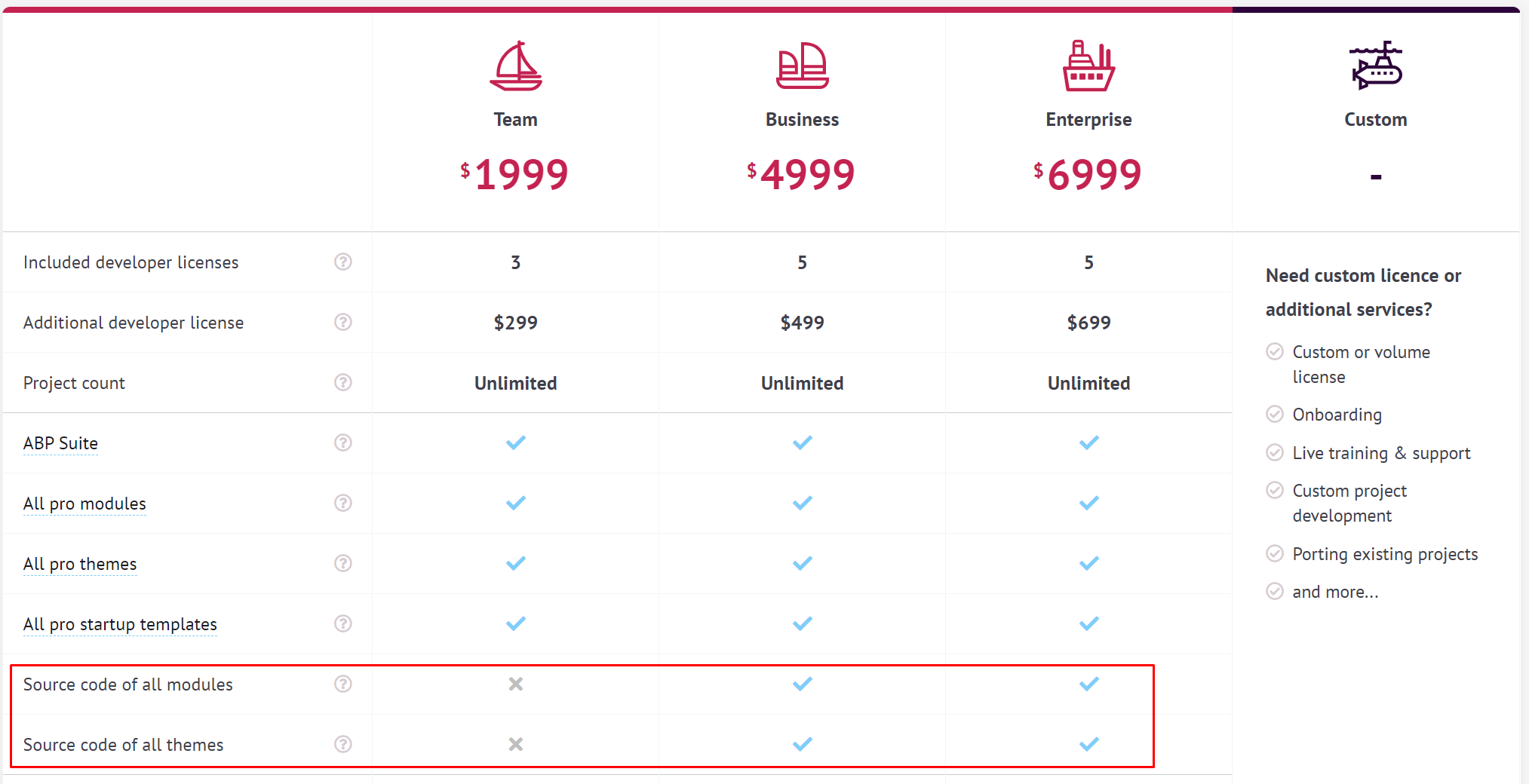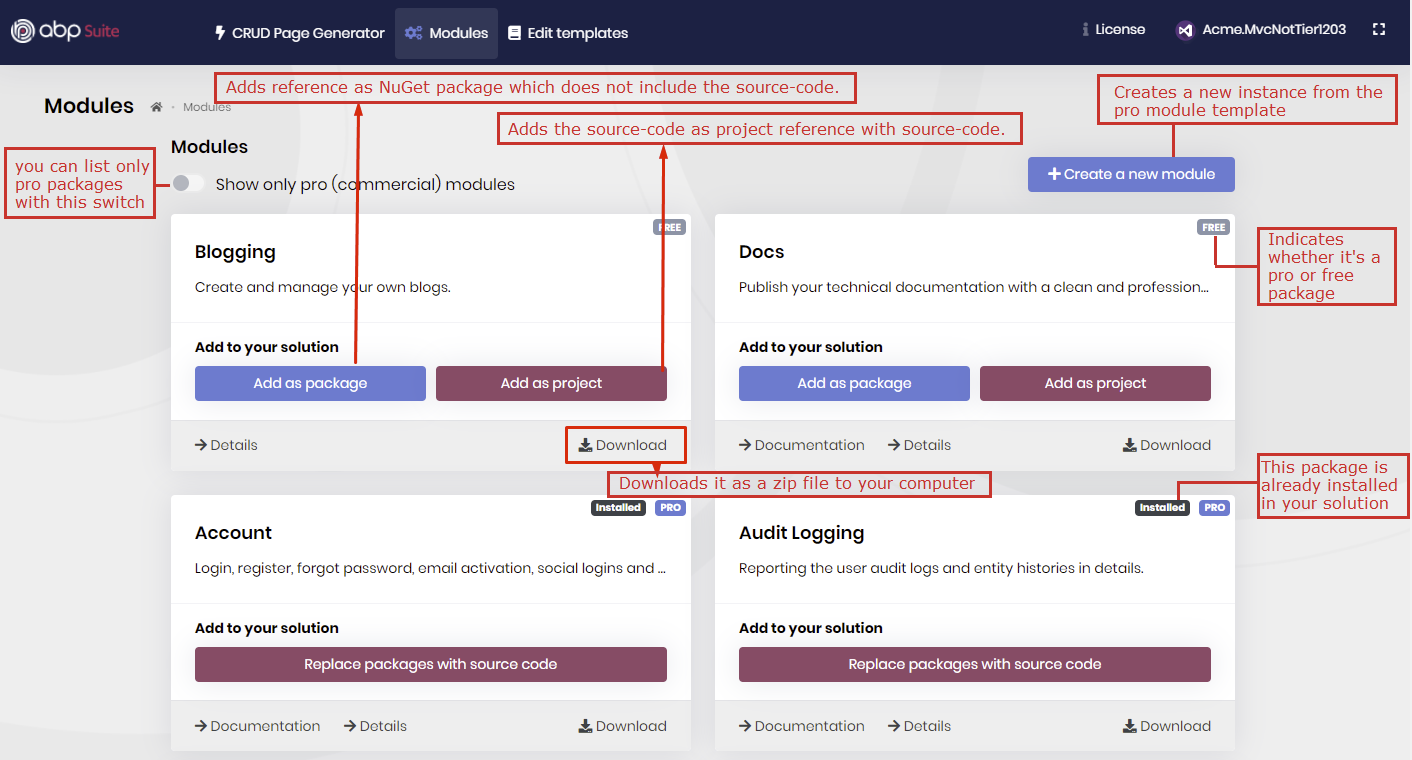this character is in these templates: createjs_DropdownFunctions.txt , editjs_DropdownFunctions.txt and Indexjs_NavigationPropertyDropdownOpenEditModalArgs.txt.
When I check it in v3.3.2 (Suite) I don't see the dash char.
can you double check that you are running on 3.3.2. this was an old issue and must be fixed in 3.3.2

You can use APB Suite. Click the Modules menu item to find download links for each module. You can also add the module as a NuGet package or as a project reference.

See also https://docs.abp.io/en/commercial/latest/abp-suite/source-code
You can use the ABP CLI to download a module source-code. See how to get source via CLI.
Example usage of the module download via ABP CLI:
abp get-source Volo.Account.Pro
Frequently used module names:
Volo.AccountVolo.AuditLoggingVolo.BackgroundJobsVolo.BloggingVolo.DocsVolo.FeatureManagementVolo.IdentityVolo.IdentityServerVolo.PermissionManagementVolo.SettingManagementVolo.TenantManagementVolo.UsersVolo.Docs.AdminVolo.Account.ProVolo.AuditLogging.UiVolo.Identity.ProVolo.Identityserver.UiVolo.LanguageManagementVolo.SaasVolo.EmailManagementVolo.LeptonThemeTo download the source code of the LeptonX Theme
abp get-source Volo.Abp.LeptonXTheme
For the old Lepton Theme source-code, use this code: abp get-source Volo.LeptonTheme
To download the source-code of the Angular packages, download the corresponding module via abp get-source command. After downloading, you will find a folder called Angular. This folder contains the source-code of Angular packages.
and close your Visual Studio then delete all bin&obj folders
I want to download the ABP Framework, pro modules and theme source-code. Also how can I download the pro Angular NPM packages?
do you have typeof(AbpPermissionManagementEntityFrameworkCoreModule), in your DependsOn attribute in Host project
is this Suite generated page?

